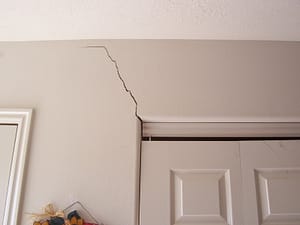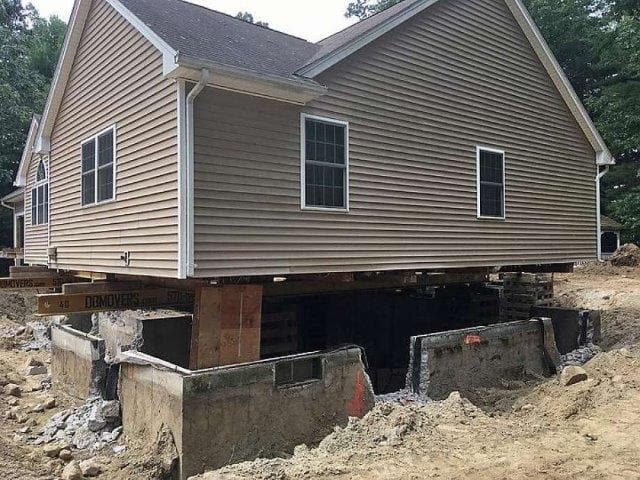The Facts About Best Basement Waterproofing Uncovered
The Facts About Best Basement Waterproofing Uncovered
Blog Article
Some Known Facts About Best Basement Waterproofing.
Table of ContentsHow Best Basement Waterproofing can Save You Time, Stress, and Money.Best Basement Waterproofing for BeginnersThe Main Principles Of Best Basement Waterproofing Things about Best Basement WaterproofingBest Basement Waterproofing Fundamentals Explained
AdvantaClean's experienced specialists and specialists will find the water resource. If wall surface or piece splits are present, we will infuse polyurethane and epoxies into the splits and secure the concession, avoiding more wetness from getting in.
If there's condensation on the outside of the foil, you have high humidity in your cellar. If the aluminum foil has condensation on the inside surface area (next to the wall surface), the soil around your house might be normally damp from a high water table or bad dirt drainage.
You can waterproof just your interior walls, which might address the issue. Once they dry out, they stick completely to concrete and stonework wall surfaces.
Everything about Best Basement Waterproofing
Concrete water resistant coatings can not be used to formerly painted surfaces; check the label. Known as densifiers, they are appropriate just for walls that have not been repainted or sealed.
You comb, roll, or spray it on a lot even more heavily one gallon covers simply 75 square feet, not the 300 square feet normal with conventional paint. Water resistant paint is fine for do it yourself application. You can apply it over repainted surfaces, and paint over it once it's healed (one gallon costs $37).
It can cost $10,000 to $15,000, depending on the job needed. Exterior waterproofing entails excavating all around the home to the full depth of the foundation wall surfaces, then setting up a water-proof finishing or membrane covered by drain panels.
We have actually all been caught in a tornado without any umbrella or raincoat (Best Basement Waterproofing). And it's constantly a dish for catastrophe: everything's wet, your hairdo is spoiled, and points are getting stuffy. A cellar without waterproofing is type of like that. Minus the ruined hairdo part. Your cellar does not intend to experience a downpour without appropriate defense equally as high as you don't intend to.
The Ultimate Guide To Best Basement Waterproofing
Yet if you have actually done your research, you would certainly recognize there are 2 kinds of waterproofing: interior and exterior. It can get puzzling what they both mean, which one's a much better investment, and what will really keep the water out. Don't fret, we assembled this blog to quickly define both approaches for you and talk about the pros and cons of each.
Exterior waterproofing is a waterproofing approach that entails securing your home from the outside. It's type of like a moat around a castle. It involves digging a trench around your entire home to the structure (concerning 8 to 10 feet down). The foundation walls are after that cleaned, sealed, and YOURURL.com covered with a waterproof membrane layer or sealer.

The Best Guide To Best Basement Waterproofing
It's a much more involved procedure that needs digging up your lawn, which is pricey and time-consuming. Exterior waterproofing includes getting rid of every little thing surrounding the residence, consisting of decks, driveways, pathways, landscaping, a/c units, decks, and more. If any of the job was done incorrectly and water is still entering your basement, there isn't much you can do to fix or repair it.
Interior basement waterproofing includes waterproofing from the within. Any type of water that leakages into your basement is redirected before it touches your flooring. It's type of like using a raincoat under your clothing. It entails two points: a water drainage track and a sump pump. It works by securing the within your basement walls and floorings so water that attempts to go into is funnelled out through a sump pump.
It's an efficient method to water-proof your basement - Best Basement Waterproofing. The downside of interior cellar waterproofing mostly relates to the installment procedure. This approach calls for kept items, furniture, go to this website and integrated shelving or closets to be relocated from touching the cellar wall surfaces. And during installment, your basement can't be utilized. The most significant difference between both approaches is this: Outside waterproofing is a preventative service and indoor waterproofing is a corrective solution.
8 Easy Facts About Best Basement Waterproofing Described
In final thought, outside and indoor basement waterproofing are both reliable methods of protecting your home from water damages. Exterior waterproofing produces a barrier go to this site that prevents water from entering your home, while interior waterproofing redirects water that does enter your home. And it is necessary to note that outside waterproofing is a costly and disruptive setup process when compared to indoor waterproofing.
Whichever method you pick, ensure you select a reliable and credible service provider for the work. Both methods call for experienced workers to manage the work. If you have any type of inquiries about basement waterproofing, please reach out to us. And if you remain in our service area and have water in your basement, call us for a totally free, no-obligation home assessment.
You can fill out our type here, start a conversation in the lower right-hand edge, or call us at 1-800-827-0702.
Report this page